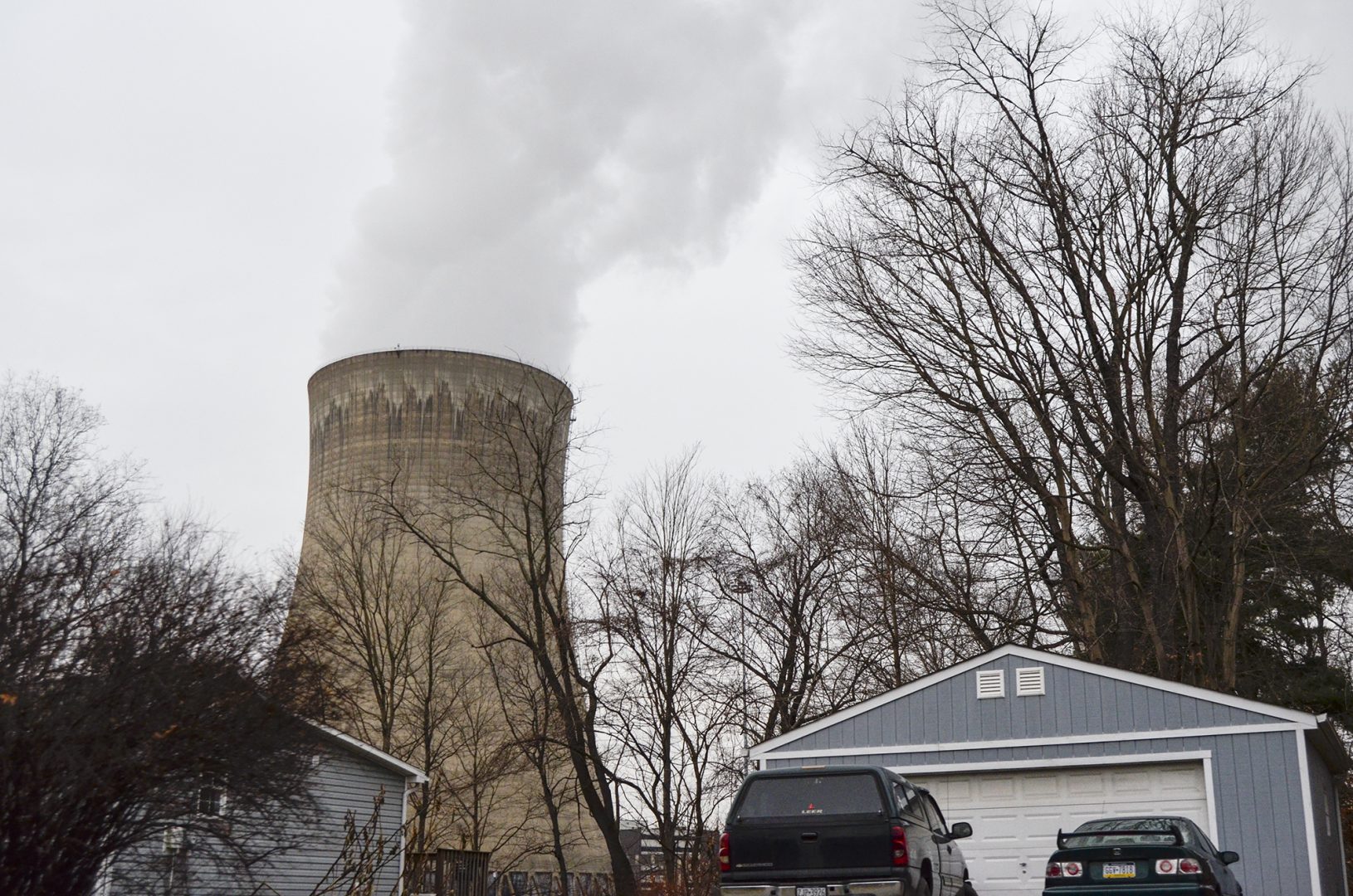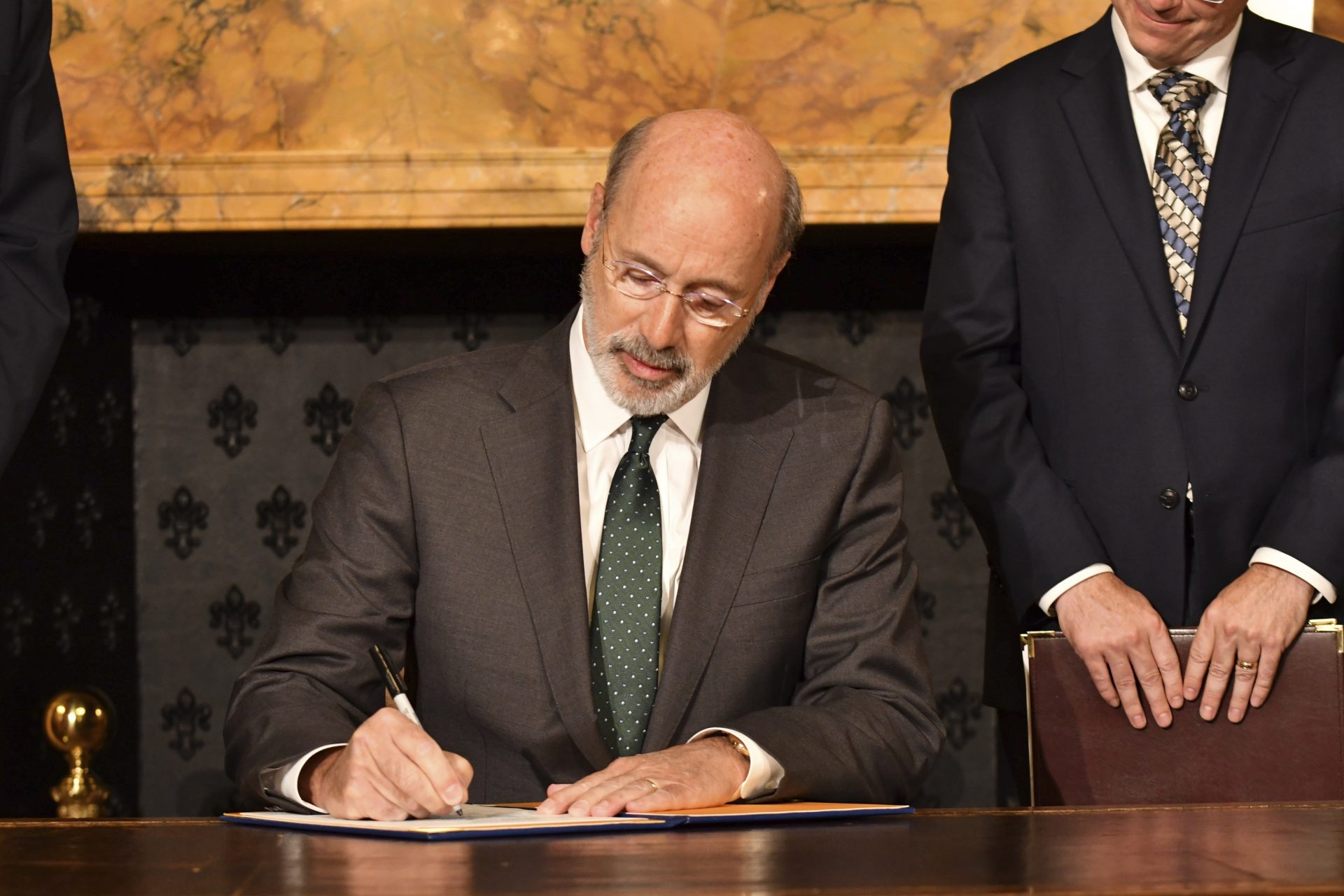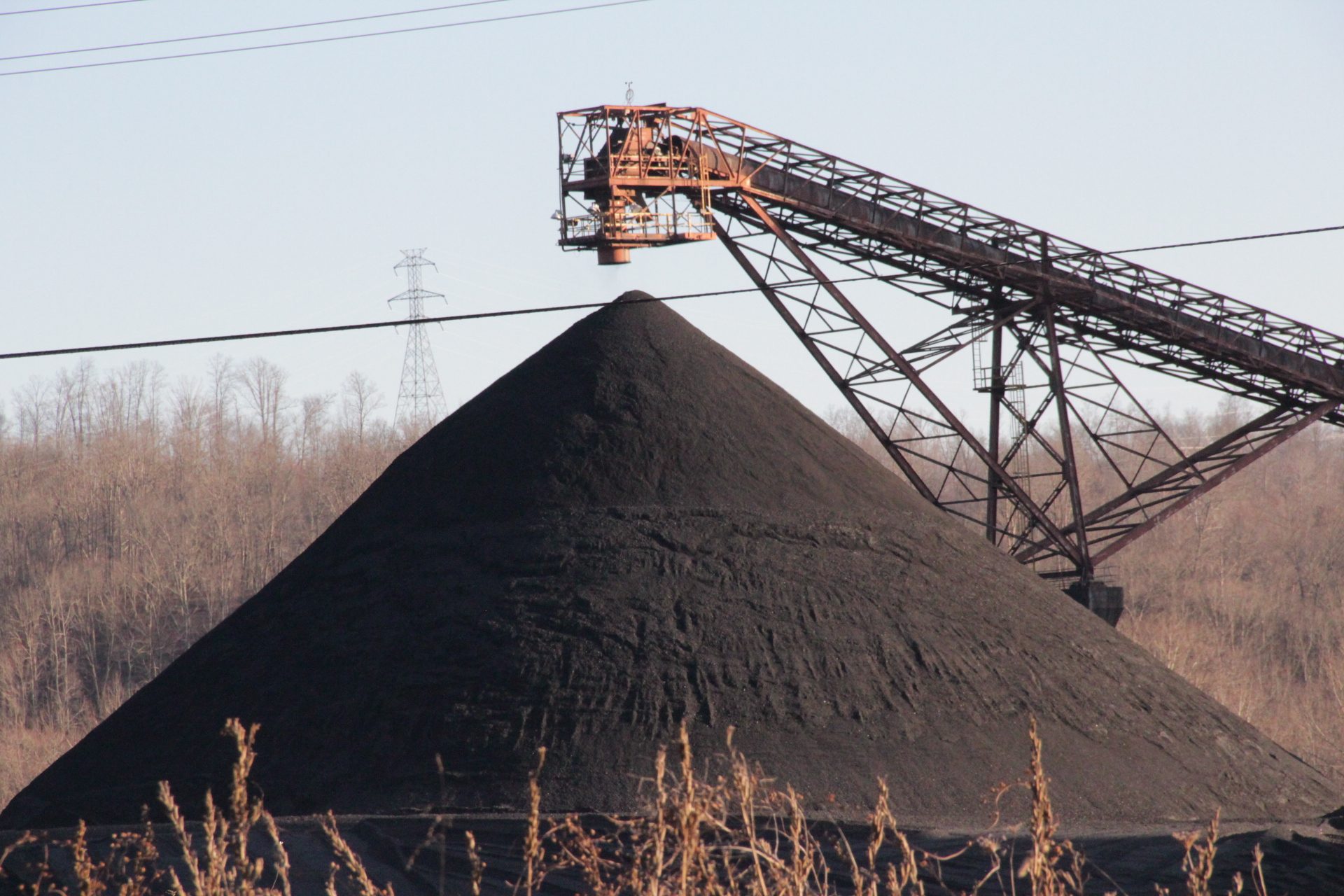
The owners of Beaver Valley nuclear power station in Shippingport, Pa. reversed a decision to shut it down early, citing Gov. Tom Wolf's plan to join RGGI.
Amy Sisk / StateImpact Pennsylvania


The owners of Beaver Valley nuclear power station in Shippingport, Pa. reversed a decision to shut it down early, citing Gov. Tom Wolf's plan to join RGGI.
Amy Sisk / StateImpact Pennsylvania

Amy Sisk / StateImpact Pennsylvania
The owners of Beaver Valley nuclear power station in Shippingport, Pa. reversed a decision to shut it down early, citing Gov. Tom Wolf's plan to join RGGI.
The Environmental Quality Board is set to vote Tuesday on the final regulation that would have Pennsylvania join the Regional Greenhouse Gas Initiative. If the board approves it, the commonwealth will be set up to become the first major fossil-fuel state to put a price on carbon emissions.
The rule would still need approval from the Independent Regulatory Review Commission and the Attorney General’s Office. The Wolf Administration hopes to join the program in early 2022.
The cap-and-trade program has pitted Democratic Gov. Tom Wolf against Republicans who control the legislature.
StateImpact Pennsylvania reviews what we know about the program and how Pennsylvania arrived at this vote:
What is the Regional Greenhouse Gas Initiative?
RGGI is a cap-and-trade program that aims to lower carbon dioxide emissions from the power sector. Under the program, made up of 11 mostly northeastern states, power plants buy allowances for the CO2 they emit. That makes dirtier sources of power less competitive selling electricity to the grid. They generate less while cleaner sources ramp up, lowering harmful emissions. States invest the money from the allowance auctions, usually in things like clean energy and energy efficiency. The states in the program are Connecticut, Delaware, Maine, Maryland, Massachusetts, New Hampshire, New Jersey, New York, Rhode Island, Vermont, and Virginia.
Why is Pennsylvania trying to join?

(AP Photo/Marc Levy)
Pennsylvania Gov. Tom Wolf signs an executive order for his administration to start working on regulations to bring Pennsylvania into a nine-state consortium that sets a price and limits on greenhouse gas emissions from power plants, Thursday, Oct. 3, 2019 in Harrisburg, Pa. The move is part of Wolf’s effort to fight climate change in the nation’s fourth-biggest emitter of greenhouse gases.
Gov. Wolf signed an executive order in October 2019 directing the Department of Environmental Protection to draft a regulation to join RGGI. Targeting CO2 emissions is in line with Wolf’s climate goals of reducing state greenhouse gas emissions 26 percent by 2025 and 80 percent by 2050, compared to 2005 levels.
“If we want a Pennsylvania that is habitable for our children and our grandchildren… and flooding doesn’t destroy homes and businesses over and over again, we need to get serious right now about addressing the climate crisis,” Wolf said during the RGGI announcement.
Who supports it and why?
Most (but not all) Democrats in the legislature, and environmental groups across the state, say RGGI is an important step for curbing pollution that contributes to climate change and affects people’s health. They say the program will raise money that can be used to aid the transition away from coal and toward cleaner energy.
Who opposes it and why?
Republicans who control the legislature are against joining RGGI, as are some Democrats, especially those who represent communities with coal mines or coal-fired power plants. They say putting a price on CO2 will kill jobs in coal communities, causing economic hardships there. They say the program could also hurt Pennsylvania more broadly if power generation declines in the state.

Reid R. Frazier / StateImpact Pennsylvania
Coal being prepared for use in electric generation.
Lawmakers claim charging power plants for CO2 emissions amounts to a tax, which only the legislature has the authority to enact.
Republicans have support from the coal industry and some trade unions whose workers could be affected by participation.
What has happened so far?
In 2019, Wolf directed the Department of Environmental Protection to develop a regulation that would allow the state to join RGGI. DEP released the first draft rule in early 2020. Three advisory committees declined to recommend the rule before it was sent to EQB, which voted to move forward in September.
DEP collected more than 14,000 comments. A DEP analysis shows more than 9,000 of the comments mentioned the success of cap-and-trade programs and more than 8,000 mentioned the health benefits of the regulation. About 1,300 comments focused on the impact on coal communities.
Based partly on that feedback, DEP has since revised the draft into a final rule, adding environmental justice provisions and protections for certain plants, such as waste coal. The new version won approval from the DEP advisory committees, though the makeup of those committees changed slightly from the first vote.
Opponents have tried several ways to keep Pennsylvania out of RGGI. Last year, lawmakers passed a bill that would have required legislative approval to join a cap-and-trade program. Wolf vetoed the bill. A new version is pending in the GA this year.
Republican lawmakers have sent letters to regulatory bodies in PA and to the RGGI administrator asking for them to stop the process. According to RGGI’s website, a state may join the program if it has adopted a compatible carbon dioxide budget trading regulation, which is determined by the current RGGI states. A RGGI board member said it doesn’t matter if a state joins through law or a regulatory process.
Republicans are also refusing to seat Wolf’s nomination to the state’s utility regulator unless he backs off the RGGI effort.
What is the projected benefit of joining?
RGGI, Inc. says participating states have seen CO2 emissions from power plants fall by 45 percent from a base level measured from 2006-2008.
DEP projects RGGI participation would prevent between 97-227 million tons of carbon emissions between 2022 and 2030. The upper range of that is nearly 10 times what the state could achieve without RGGI.
DEP estimates the avoided pollution would realize more than $6 billion worth of health benefits over the next decade and cut the number of asthma attacks for children aged 6-18 by more than 45,000.
What is the potential economic impact of joining?
RGGI states have seen economic growth over the life of the program. A 2018 study from Analysis Group found RGGI netted about $1.4 billion in economic value added between 2015-2017 and that RGGI compliance led to overall job gains. DEP projections show a net increase of 27,000 jobs under RGGI.
But the economic impact will likely be unequal. Coal generation is set to decline under RGGI. The Pennsylvania Coal Alliance says joining RGGI could impact a quarter of the state’s coal production by making coal-fired generators less competitive.
A 2019 study found Pennsylvania’s coal industry supports about 17,000 direct and indirect jobs.
Will joining affect my electricity bill?
Since RGGI introduces a new price into the electricity market, it’s possible electric rates will rise.
A Penn State analysis found Pennsylvanians will pay about $43 more each year in energy costs per household under the program. They also found the state will raise more than enough money to compensate ratepayers for their losses, depending on how the state decides to spend the money.
Other studies have found that RGGI can help suppress wholesale electric prices, because states reinvest the allowance money in energy efficiency measures that lower demand, and so, lower prices.
What will Pennsylvania do with the money raised from the program?
Pennsylvania expects to raise about $300 million dollars from selling carbon allowances in the first year of the program.
Under legislation sponsored by Democrats, 37.5 percent of revenue would go to an Energy Communities Trust Fund where it could be used for things like worker retraining and to support school districts.
Low-income areas with high pollution burdens, known as environmental justice communities, would get 12.5 percent of funds to help with things like environmental cleanup and electricity bill assistance.
The remaining half of RGGI proceeds would go to the state’s Clean Air Fund, to be used for greenhouse gas abatement, clean energy and energy efficiency projects.
Republicans have so far not come up with an investment plan.
If no law governing RGGI investments is passed, the money must go to the state’s Clean Air Fund where it can only be used to reduce air pollution.
StateImpact Pennsylvania is a collaboration among WITF, WHYY, and the Allegheny Front. Reporters Reid Frazier, Rachel McDevitt and Susan Phillips cover the commonwealth’s energy economy. Read their reports on this site, and hear them on public radio stations across Pennsylvania.
(listed by story count)
StateImpact Pennsylvania is a collaboration among WITF, WHYY, and the Allegheny Front. Reporters Reid Frazier, Rachel McDevitt and Susan Phillips cover the commonwealth’s energy economy. Read their reports on this site, and hear them on public radio stations across Pennsylvania.
Climate Solutions, a collaboration of news organizations, educational institutions and a theater company, uses engagement, education and storytelling to help central Pennsylvanians toward climate change literacy, resilience and adaptation. Our work will amplify how people are finding solutions to the challenges presented by a warming world.